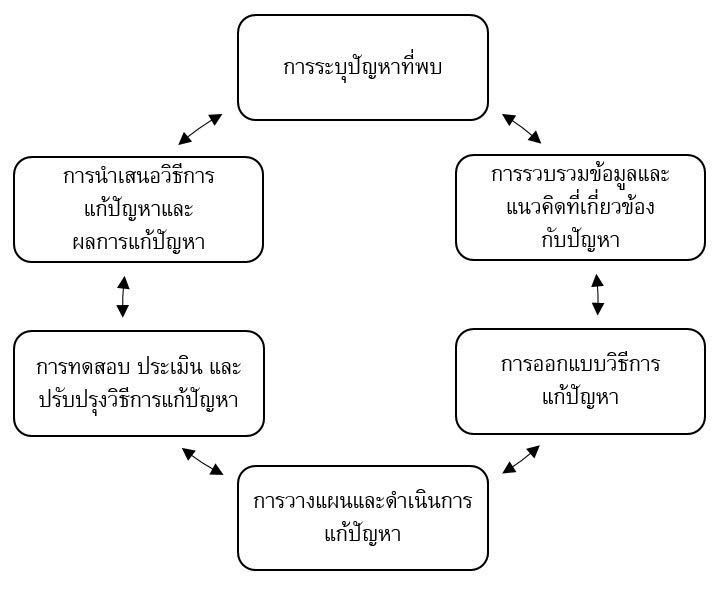กระบวนการออกแบบเชิงวิศวกรรม: กลไกขับเคลื่อนกิจกรรมสะเต็ม
Main Article Content
Abstract
Kornkanok Lertdechapat and Chatree Faikhamta
บบทความ: 26 พฤศจิกายน 2563; แก้ไขบทความ: 11 มีนาคม 2564; ยอมรับตีพิมพ์: 1 มิถุนายน 2564; ตีพิมพ์ออนไลน์: 3 ธันวาคม 2564
บทคัดย่อ
การดำรงชีวิตในสังคมที่ซับซ้อนต้องอาศัยการบูรณาการความรู้และทักษะในการดำรงชีวิตเพื่อแก้ปัญหาหรือสนองความต้องการสังคม การจัดการเรียนรู้ตามแนวทางสะเต็มศึกษาเป็นแนวทางการจัดการเรียนรู้ที่ช่วยให้ผู้เรียนบูรณาการความรู้และกระบวนการทางวิทยาศาสตร์ ร่วมกับคณิตศาสตร์ เทคโนโลยี และวิศวกรรมศาสตร์ ในการออกแบบแนวทางการแก้ปัญหา ผ่านกระบวนการออกแบบเชิงวิศวกรรมซึ่งเป็นกลไกการขับเคลื่อนกิจกรรมสะเต็ม อย่างไรก็ตาม ครูมีความเข้าใจเพียงบางส่วนเกี่ยวกับกระบวนการออกแบบเชิงวิศวกรรม ซึ่งส่งผลให้กิจกรรมสะเต็มศึกษาไม่สอดคล้องกับธรรมชาติของวิศวกรรมศาสตร์ แม้ว่ากระบวนการออกแบบเชิงวิศวกรรมจะไม่มีขั้นตอนที่ตายตัว แต่มีลักษณะสำคัญที่สอดคล้องกันและเป็นแนวทางให้ผู้สอนออกแบบกิจกรรมการเรียนรู้เพื่อให้ผู้เรียนออกแบบแนวทางการแก้ปัญหาที่นำไปใช้ในบริบทจริง ผู้เขียนจึงได้ถอดบทเรียนการจัดการเรียนรู้ตามแนวทางสะเต็มศึกษาที่นิสิตฝึกประสบการณ์วิชาชีพครูนำไปใช้ในชั้นเรียนวิทยาศาสตร์ ลักษณะสำคัญดังกล่าว อาทิ การระบุสถานการณ์และให้ข้อมูลที่เพียงพอต่อวิเคราะห์ปัญหา สาเหตุของปัญหาและผลกระทบที่เกิดขึ้น เพื่อนำสู่การเลือกสาเหตุของปัญหาที่สามารถแก้ไขได้ ผู้เรียนสำรวจตรวจสอบและระดมความคิดเกี่ยวกับปัญหาและแนวทางการแก้ปัญหาที่เป็นไปได้ เพื่อเลือกวิธีการที่เหมาะสมในการแก้ปัญหาภายใต้เงื่อนไขและข้อจำกัด สร้างชิ้นงานหรือออกแบบวิธีการแก้ปัญหา ทดสอบและปรับปรุงแนวทางดังกล่าว โดยคำนึงถึงความคุ้มค่าต่อเวลาและแรงที่ใช้ไป รวมทั้งผลกระทบต่อสังคมและสิ่งแวดล้อม
คำสำคัญ: กระบวนการออกแบบเชิงวิศวกรรม ธรรมชาติของวิศวกรรมศาสตร์ สะเต็มศึกษา
Abstract
Living in the complex societies requires the integration of knowledge and skills to solve the problems or improve the needs of people. The integrated STEM education is an approach to enhance students to apply scientific knowledge and skills with mathematics, technology, and engineering in order to develop the solutions through the engineering design process (EDP) which is the drive of STEM activities. However, teachers had alternative understandings about EDP which affect the alignment of nature of engineering with STEM activities. Although there are no rigorous steps of EDP, the common features are shown from several models of EDP. The teachers could design the STEM lessons aligned with the common features of EDP to promote students design the solutions for the real-word problems. The most common features of EDP included presenting the authentic problematic situation and relevant information which are enough to analyze the problem(s), cause(s), and effect(s). This will lead to the selection of the most feasible problem which could be solved by students themselves. Students will be provided the opportunity to investigate and brainstorm the problem(s) and possible solutions to apply the most feasible solution to solve the selected problem within the determined conditions and constraints. Students also develop, test, and evaluate the solutions with the consideration of the cost and time they spend, as well as social, environmental impacts.
Keywords: Engineering design process, Nature of engineering, STEM education
Downloads
Article Details

This work is licensed under a Creative Commons Attribution-NonCommercial 4.0 International License.
References
Antink–Meyer, A., and Brown, R. A. (2019). Nature of engineering knowledge. Science & Education 28(3-5): 539–559.
Battelle for Kids. (2019). Framework for 21st Century Learning. Retrieved from https:// www.battelleforkids.org/networks/p21/frameworks-resources, October 6, 2020.
Bryan, L. A., Moore, T. J., Johnson, C. C., and Roehrig, G. H. (2016). Integrated STEM Education (pp. 23–37). New York: Routledge.
Burke, B. N. (2014). The ITEEA 6E learning by DeSIGNTM model: Maximizing informed design and inquiry in the integrative STEM classroom. Technology and Engineering Teacher 73(6): 14–19.
Bybee, R. W. (2013). The Case for STEM Education: Challenges and Opportunities. USA: NSTA.
Bybee, R. W., Tylor, J. A., Gardner, A., Scotter, P. V., Powell, J. C., Westbrook, A., and Landes, N. (2006). The BSCS 5E Instructional Model: Origins, Effectiveness and Application. Colorado: BSCS.
Capobianco, B. M., Nyquist, C., and Tyrie, N. (2013). Shedding light on engineering design. Science and Children 50(5): 58–64.
Chou, P., and Chen, W. (2017). Elementary school students’ conceptions of engineers: A drawing analysis study in Taiwan. International Journal of Engineering Education 33(1): 476–488.
Engineering is Elementary (EIE). (2020). Engineering Design Process. Retrieved from https://www.eie.org/overview/engineering-designprocess, November 6, 2020.
Grubbs, M., and Strimel, G. (2015). Engineering design: The great integrator. Journal of STEM Teacher Education 50(1): 77–90.
Honey, M., Pearson, G., and Schweingruber, H. (Eds.). (2014). STEM Integration in K–12 Education: Status, Prospects, and an Agenda for Research. Washington, DC: National Academies.
Iaolek, C., Butkatanyoo, O. and Samahito, C. (2019). Effects of science learning experience provision by using inquiry and engineering design process on young children’s science communications. Journal of Research Unit on Science, Technology and Environment for Learning 10(1): 79–93. (in Thai)
Johnson, C. C., Peters–Butron, E. E., and Moore, T. J. (2016). STEM Road Map: A Framework for Integrated STEM Educ-ation. New York: Routledge.
Johnson, C. C., Walton, J. B., and Peters–Burton, E. (2018). STEM Road Map for High School. Virginia: National Science Teacher Association.
Museum of Science, Boston. (2014). Engineering in Elementary. Retrieved from http://www.eie.org/, May 12, 2020.
National Research Council [NRC]. (2014). STEM Integration in K–12 Education: Status, Prospects, and an Agenda for Research. USA: National Academies.
Organisation for Economic Co–operation and Development [OECD]. (2018). The future of education and skills: Education 2030. Retrieved from https://www.oecd.org/education/2030-project/, October 14, 2020.
Pimthong, P., and Williams, J. (2018). Research report: Conceptual Framework for STEM Teacher Education Course. Bangkok: Kasetsart University.
Pimthong, P., and Williams, J. (2020). Preservice teachers’ understanding of STEM education. Kasetsart Journal of Social Sciences 41: 289–295.
Pleasants, J., and Olson, J. K. (2018). What is engineering? Elaborating the nature of engineering for K–12 education. Science Education 103(1): 145–166.
Stohlmann, M., Moore, T. J., and Roehrig, G. H. (2012). Considerations for teaching integrated STEM education. Journal of Pre–College Engineering Education Research (J–PEER) 2(1): 28–34.
The Institute for the Promotion of Teaching Science and Technology [IPST]. (2015). Standards of STEM education. Bangkok: Success Publication. (in Thai)
The United Nations Educational, Scientific and Cultural Organization [UNESCO]. (2016). 2014 Regional Study on Transversal Competencies in Education Policy and Practice (Phase II). Asia–Pacific Education Research Institutes Network (ERI–NET). Paris and Bangkok, UNESCO.
Vichaidit, C., and Faikhamta, C. (2017). Exploring orientations toward STEM education of pre–service science teachers. Rajabhat Maha Sarakham University Journal 11(3): 165–175. (in Thai)
